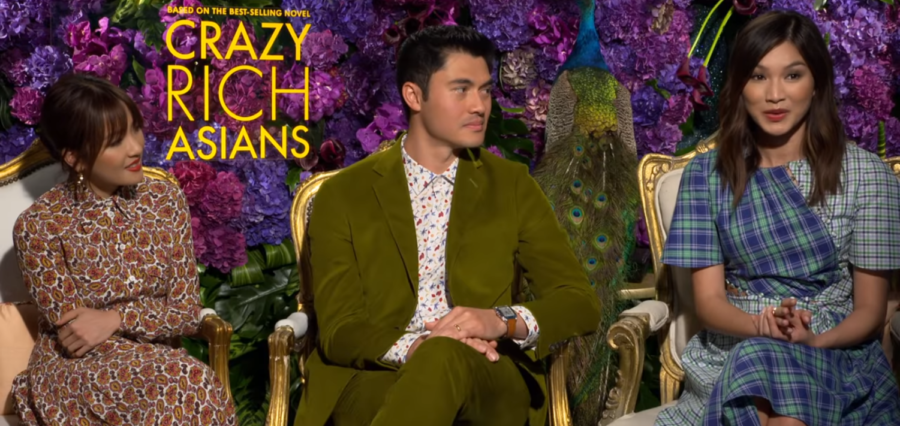Crazy Rich Asians, the Book, Features Both the Life and the Love
Constance Wu, Henry Golding, and Gemma Chan, starred in the book-to-movie adaption of Kevin Kwan’s Crazy Rich Asians.
The first book I finished in 2023, and also the first personal reading book I finished in four months, Crazy Rich Asians, by Kevin Kwan, saved me from having to revoke my book-nerd status. This book is well-detailed and researched, intriguing as an exposé on high-flying Singaporean and Asian lifestyles parading as a rom-com, and just witty enough to pull the whole thing off. Having watched the film first, I didn’t expect that this novel would rely as much as it did on its setting and plot rather than on its characters. I would, however, applaud both the adaptation and the original.
Crazy Rich Asians, the book, is enriched by the many details and components of “crazy rich” life that Kwan focuses on. Through a passage in Part 3, Chapter 2: Nassim Road, which describes Annabel Lee’s perspective of the Harry Leong Party, Kwan manages to reference the tradition of an esteemed old-money Singaporean household, the modernity that now overlays tradition, the interconnection of the many old families, the fashion of the elite, and the decades of history that has enabled such families to possess priceless artifacts through their ancestral line. The vibrance of the scene, while displaying Annabel Lee’s perspective of those even more elite than she, skillfully illustrates the culture of these families. It draws the attention to “the Ru Ware from the Northern Song Dynasty” and “the Peranakan-style opium chairs—look at the mother-of-pearl inlay” at the same time that it contributes to the story. The many footnotes and dedication to common phrases and slang in the book also hint at the novel’s purpose to educate instead of just entertain.
Kwan honors the original inspiration for his story as well, taking from his own childhood and experiences in higher Singaporean society and often reflecting details from his familial history; Sir James Young, the grandfather of love interest Nicholas Young is likely fashioned after Kwan’s paternal grandfather, Sir Arthur Kwan, as both the character and the real figure have knighthood and were the first-western trained specialists (neurology for Young and ophthalmology for Kwan) in Singapore. In a similar adaptation, Kwan’s great-grandfather, Oh Sian Guan, who founded Singapore’s oldest bank likely inspired the book’s great-grandfather, Shang Loong Ma, who was a very wealthy banker.
Kwan cleverly uses Rachel as a look into the rich life, acknowledging the absurdity of the crazy rich life, but he also provides points of views from the socialites themselves, contextualizing and humanizing their actions. This reveals the pressure often placed on these comfortable, silver-spoon heirs—but not going so far as to ignore that some of them are still pompous trust-fund babies (see Edison Cheng). I particularly appreciate Colin Khoo, Asia’s charismatic, billionaire fiancé and the designated best friend of Nick Young. Colin resides at the center of the shenanigans, shouldering the most public scrutiny because Asia’s event of the decade is his wedding. Yet, he is likely also the character least equipped to handle it, suffering from “a severe anxiety disorder and crippling depression.” Kwan shows that Colin’s standing only worsens his condition, yet he also shows that Colin cannot escape his position. Regardless of his looks, money, and outward personality, life is far from paradise for him.
Crazy Rich Asians, the novel, hones in on the actual culture, customs, and circumstances of the prominent figures in Singaporean society, leaving just enough for enjoyment while spotlighting a world that most people wouldn’t bother to learn about on their own. For that, it is ingenious. I recommend it as a strong balance between an intriguing narrative and enjoyable rom-com.
Saniya Shah is a senior at Wilton High School and a Co-Editor-in-Chief for the Forum. She wrote a fiction book called On Touching Stars and spends every free minute writing something, from poetry to short stories to news articles. She's a morning person, likes tea, and is making good on her goal to read more.

